Efficacy of Myricetin Supplementation on Glucose and Lipid Metabolism: A Systematic Review and Meta-Analysis of In Vivo Mice Studies
- PMID: 39519561
- PMCID: PMC11547919
- DOI: 10.3390/nu16213730
Efficacy of Myricetin Supplementation on Glucose and Lipid Metabolism: A Systematic Review and Meta-Analysis of In Vivo Mice Studies
Abstract
Background/objectives: Type 2 diabetes mellitus (T2DM) is a disorder characterized by insulin resistance, hyperglycemia, and dyslipidemia. Myricetin, a flavonoid found in various plants, has shown potential anti-diabetic effects in murine studies. This meta-analysis aimed to evaluate the impact of myricetin supplementation on glucose metabolism and lipid profiles in mouse models of metabolic diseases.
Methods: A systematic review and meta-analysis were conducted in accordance with PRISMA guidelines (PROSPERO: CRD42024591569). Studies involving mice with metabolic disease models and exclusively using myricetin supplementation were checked across four databases (Embase, Scopus, PubMed, and WoS) until 23rd September 2024. The primary outcomes assessed were blood glucose (BG), insulin levels, triacylglycerol (TAG), total cholesterol (TC), HDL, and LDL. A random-effects model was applied to estimate standardized mean differences (SMD), and SYRCLE's risk-of-bias tool for animal studies was used.
Results: Twenty-one studies with 514 mice met the inclusion criteria. Myricetin supplementation significantly reduced BG (SMD = -1.45, CI: -1.91 to -0.99, p < 0.00001, I2 = 74%), insulin (SMD = -1.78, CI: -2.89 to -0.68, p = 0.002, I2 = 86%), TAG (SMD = -2.60, CI: -3.24 to -1.96, p < 0.00001, I2 = 81%), TC (SMD = -1.86, CI: -2.29 to -1.44, p < 0.00001, I2 = 62%), and LDL (SMD = -2.95, CI: -3.75 to -2.14, p < 0.00001, I2 = 74%). However, the effect on HDL was not statistically significant (SMD = 0.71, CI: -0.01 to 1.43, p = 0.05, I2 = 83%).
Conclusions: Myricetin supplementation improved glucose metabolism and lipid profiles in mouse models, suggesting its potential as a therapeutic agent for managing T2DM. However, further research is needed to confirm these findings in human studies.
Keywords: 3,3′,4′,5,5′,7-hexahydroxyflavone; animal studies; antihyperglycemic; antihyperlipidemic; cardiometabolic health; dyslipidemia; insulin resistance.
Conflict of interest statement
The authors declare no conflicts of interest.
Figures

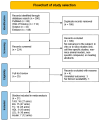

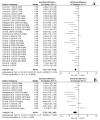
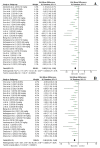
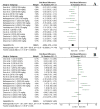
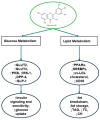
References
-
- Ong K.L., Stafford L.K., McLaughlin S.A., Boyko E.J., Vollset S.E., Smith A.E., Dalton B.E., Duprey J., Cruz J.A., Hagins H., et al. Global, regional, and national burden of diabetes from 1990 to 2021, with projections of prevalence to 2050: A systematic analysis for the Global Burden of Disease Study 2021. Lancet. 2023;402:203–234. doi: 10.1016/S0140-6736(23)01301-6. - DOI - PMC - PubMed
-
- Abbafati C., Abbas K.M., Abbasi M., Abbasifard M., Abbasi-Kangevari M., Abbastabar H., Abd-Allah F., Abdelalim A., Abdollahi M., Abdollahpour I., et al. Global burden of 369 diseases and injuries in 204 countries and territories, 1990-2019: A systematic analysis for the Global Burden of Disease Study 2019. Lancet. 2020;396:1204–1222. doi: 10.1016/S0140-6736(20)30925-9. - DOI - PMC - PubMed
Publication types
MeSH terms
Substances
LinkOut - more resources
Full Text Sources
Medical
Miscellaneous

